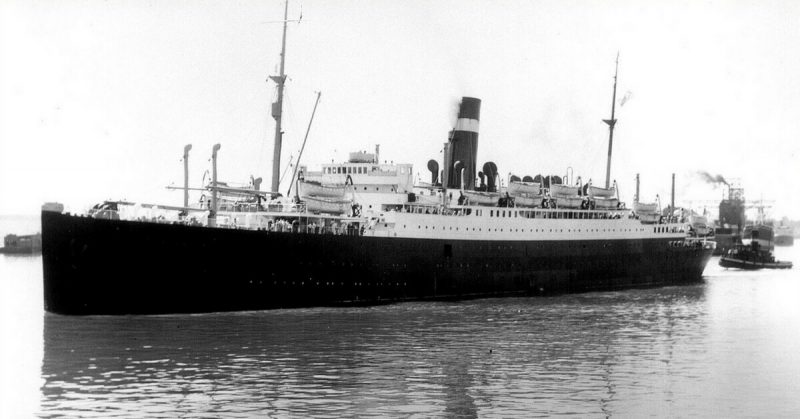David Mearns is a shipwreck hunter. He says sonar data he has acquired shows the wreck of the Athenia, a passenger liner that was the first British ship torpedoed in World War II.
Mearns claims that the data shows an object whose dimensions match a 160-meter long, 13,500-tonne passenger liner, just like the Athenia. The coordinates of the wreck are also very near to the coordinates sent in the distress calls from the Athenia and recorded in the logs of rescue vessels.The wreck is located in 200m of water on Rockall Bank, an area of raised seabed nearly 500 kilometers off the coast of Ireland.
In 1939, just hours after Britain declared war on Germany, a German submarine sank the ship, killing 100 people, including many Americans.
Germany, out of fear that the US would join the war, did not admit to the attack at first.
The commander of the German sub, Fritz Julius Lemp, mistakenly thought that the ship was an armed cruiser. The German government tried to cover up their involvement, going as far as blaming Winston Churchill for the sinking. Churchill had been appointed First Lord of the Admiralty on the day of the attack.
Prime Minister Neville Chamberlain made the public announcement of Britain’s war declaration at 11 in the morning on September 3, 1939. The German U-boat, U-30, fired her torpedoes at the Athenia at 7:38 pm that day. It took the ship until 11 the next morning to sink.
Mearns works for insurers and television companies and has located some two dozen major shipwrecks. He said that the ship in the sonar scans shows damage in the same place the Athenia was hit by the torpedoes but it is otherwise in good shape.
While stopping short of definitively calling this object the Athenia, he said that all of the data fits with what one would expect to find if they found the Athenia.
Because the water isn’t deep where the wreck is located, it should not be difficult to send a remote-controlled vehicle down to examine the site.
Mearns began looking for the Athenia after receiving a commission from the BBC. The network wanted to air live footage in the sunken remains of a famous wreck. That idea never came to fruition, but Mearns would still like to see someone take on an expedition to the ship.
Mearns said that this is the first time he’s identified a wreck from researching this way. The lack of high-resolution sonar scans means this type of research usually leads nowhere. According to Mearns, the moon and Sun are mapped in higher detail than our own oceans.
Hoping to rectify this situation, Mearns is serving as a judge on the Shell Ocean Discovery XPRIZE. He’s helping to decide who to award a $7 million prize to develop better seafloor mapping technology.
The goal set last year is to have the entire topography of the world’s ocean floor mapped by 2030. The resolution of these scans would be good enough for anyone to search for wrecks on the floor of the ocean from their own home.
1,306 people were rescued from the Athenia thanks to the heroic efforts of six other vessels that came to her aid. Most of the dead came from two lifeboats that collided just as they were about to be rescued.
After the war, senior officers in the German military were convicted of war crimes stemming from the sinking of the Athenia. Fritz Julius Lemp commanded U-boats for two more years before being killed when the British badly damaged his boat U-110 with depth charges and then captured it and the Enigma machine on board.
